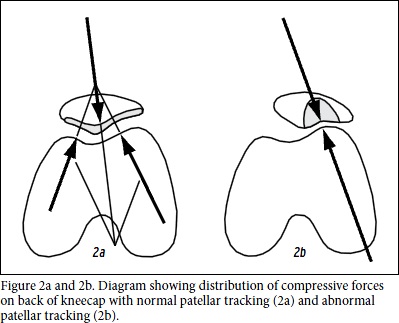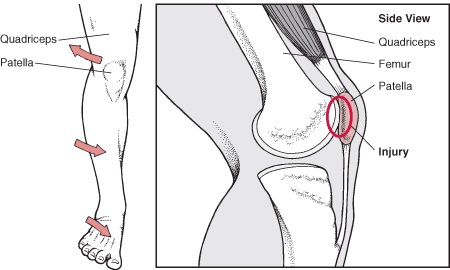“Why does my knee ache so bad when I’m sitting for a while, but then it feels fine when I get up and move???”
Here’s the usual story for this type of knee pain:
“I don’t really have any pain while I’m walking around doing things. It mostly hurts when I’m sitting for a long time, and it’s been getting worse. I used to be able to sit all day at my job without pain. Now my knee hurts after 30 minutes. It can be excruciating after an hour of sitting. It feels like the pain is right behind my knee cap. I took a road trip last month and had to stop several times to stand up and move around for relief. It usually gets a little better when I take pain medication. Lately it has been hurting when I start to exercise, but after 5-10 minutes into my workout it feels fine. I saw the orthopedic physician and reviewed my x-rays and MRI. He told me there’s just a little swelling behind my knee cap and it doesn’t need surgery. What should I do?”
This is usually a problem with the cartilage between the knee cap and the femur. When the patella tracks incorrectly in the groove of the femur at the knee, it can irritate the cartilage within the joint. Very often pain can present without any actual damage to the joint. At this point in the injury, it can easily be remedied with the right exercise routine.
If this goes untreated for a while, it can turn into a tear in the cartilage behind the knee cap or on the thigh bone or both. Depending on the severity of the tear and presence of loose pieces of cartilage in the joint, you may need surgery to make this better.
Cartilage is a highly resilient tissue in the body. It is designed to absorb lots of pressure and stresses that our joints face. It does not have a good blood or nerve supply which means that it heals and adapts super slow. It’s health is related to your hydration levels, appropriate diet and the loads you put on the cartilage. For this reason being overweight can affect your joints. Especially if the weight gain is sudden because the cartilage does not have enough time to adapt to the increased body weight.
Besides the weight, people with this type of knee pain usually have an undiagnosed movement dysfunction that is causing the patella to track wrong on the femur. It is important to have this assessed and corrected because it is truly the root of the knee pain.
So you already knew that being overweight had something to do with this and you’re likely working on your diet. You’re trying to exercise too, but you’re not sure what hurts or helps your knees. Holding on exercise is NOT a good thing because some forces on the cartilage are necessary to stimulate healing. What to do?
Here’s what to AVOID:
- Running
- Lunging
- Jumping
- Weighted squats
Think of any exercise that is impactful on your knees. Generally, they are exercises where your feet are coming off and onto the ground repetitively or where you are carrying weights.
Here’s what you SHOULD BE DOING:
- Cycling (indoor or outdoor), light resistance & avoid steep hills
- Leg press with very light weight. Start off without adding weight to the machine and do reps for 10-20 minutes.
The trick is to off-load your knees as much as possible while you work out. Your cartilage needs thousands of light weight reps to heal and begin to feel better.
Keep in mind that cartilage is one of the slowest healing tissues in the body. Treating it takes great patience. You will slowly start to feel better as the months go by. It is possible to gradually include more impactful exercise. But be okay with returning to the high repetition, low resistance exercise routine for a while if you flare yourself up. Once you are on the right track for healing, it can take up to 6-12 months for your pain to go away. This is hard for some people to hear because cycling can get boring fast if you love to run. Leg pressing 40 pounds for 20 minutes seems like nothing when you were used to squatting 200+ pounds at the squat rack.
If you live in the El Paso, Texas area please set up an appointment with us today to be sure you are doing the right things for your knee pain.


